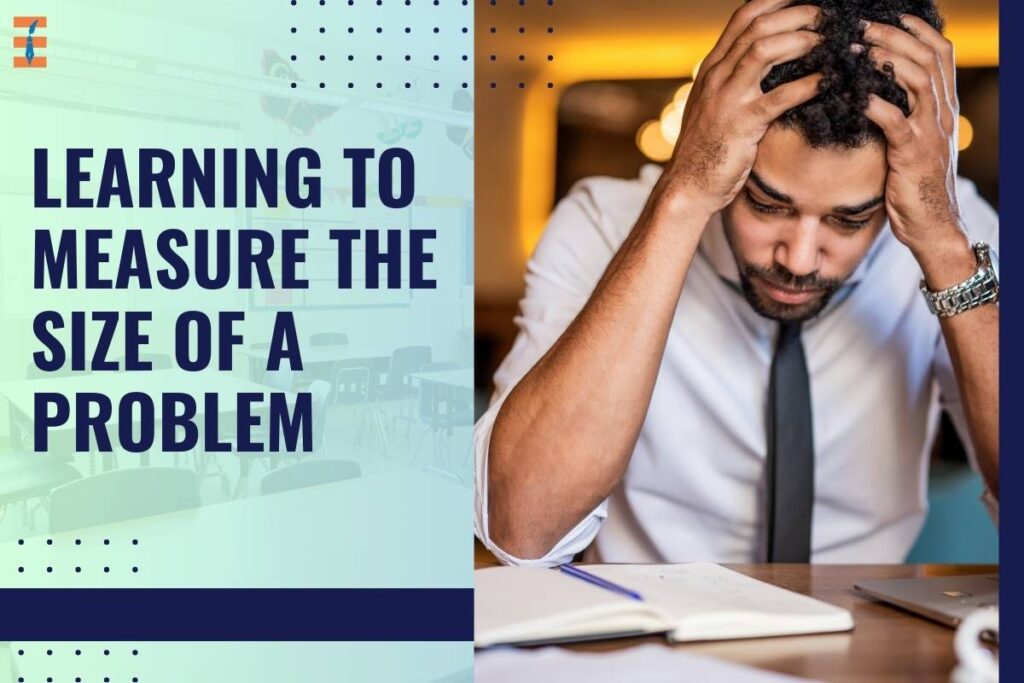In life, we encounter a multitude of challenges, both big and small. The ability to gauge and address the “size of the problem” is a fundamental aspect of emotional intelligence and effective problem-solving. Whether we’re navigating personal relationships, academic hurdles, or professional obstacles, understanding the magnitude of an issue is essential for making informed decisions and maintaining emotional well-being. In this article, we will explore the concept of measuring the size of the problem, its significance in everyday life, and strategies for enhancing this crucial skill.
What is the Size of the Problem?
The “size of the problem” refers to the scope, impact, and complexity of a challenge or difficulty that an individual encounters. It encompasses a range of issues, from minor inconveniences to significant life-changing events. Understanding the size of the problem involves evaluating its emotional and practical consequences and assessing whether it can be resolved or managed effectively.
This concept is closely tied to emotional intelligence, a critical skill that involves recognizing, understanding, managing one’s emotions, and effectively dealing with the emotions of others. Measuring the size of the problem allows individuals to respond appropriately, fostering resilience, empathy, and adaptive problem-solving.
The Significance of Measuring the size of the problem
The ability to assess the size of the problem is invaluable in various aspects of life:
- Emotional Regulation: Understanding the magnitude of a problem helps individuals manage their emotional responses. It prevents overreacting to minor issues and enables more suitable emotional reactions to significant challenges.

- Effective Communication: Individuals who can gauge the size of a problem are better equipped to communicate their concerns and needs with others, leading to more constructive dialogues and improved relationships.
- Problem-Solving: Accurately measuring the size of a problem is the first step in finding a solution. It allows individuals to prioritize issues and allocate resources effectively.
- Stress Management: By understanding which problems are within their control and which are not, individuals can reduce stress and anxiety and focus their energy on resolving manageable issues.
- Interpersonal Skills: Recognizing the size of a problem in others fosters empathy and the ability to provide appropriate support and assistance.
Teaching the Skill of Measuring the Size of the Problem
Promoting the development of this crucial skill, particularly in children and young adults, is vital for their emotional and cognitive growth. Educators, parents, and caregivers play a pivotal role in teaching the skill of measuring the size of a problem. Here are some strategies to guide individuals in this process:
- Open Dialogue: Encourage open and non-judgmental conversations about problems. Create a safe space for individuals to express their concerns and emotions.

- Categorization: Help individuals categorize problems into different levels, such as “small,” “medium,” and “large.” Use relatable examples to illustrate the distinctions.
- Emotional Exploration: Guide individuals in identifying their emotional reactions to problems. Teach them to recognize how emotions are connected to the size of a problem.
- Empathy: Develop empathy by discussing how others might perceive and react to different problems. Encourage individuals to consider various perspectives.
- Problem-Solving Scenarios: Present hypothetical scenarios and ask individuals to assess the size of the problem and propose potential solutions.
- Stress Management Techniques: Teach stress reduction strategies, such as deep breathing, mindfulness, or physical activity, to help individuals manage their emotional responses to different-sized problems.
- Learning from Experience: Allow individuals to learn through experience by facing challenges and reflecting on how they measured the size of the problem and addressed it.
Examples of Measuring the Size of a Problem
To illustrate the practical application of this skill, let’s consider a few scenarios:
- A Minor Conflict with a Friend: A child experiences a small disagreement with a friend over a game. Measuring the size of the problem, the child realizes it’s a minor issue and chooses to resolve it by discussing the problem with their friend.
- Academic Struggles: A high school student faces challenges in a particular subject and is worried about her grades. After assessing the size of the problem, she seeks help from a tutor to address the academic difficulties.
- Job Loss: An adult loses their job due to downsizing at the company. Measuring the size of the problem, the individual recognizes that it is a significant challenge. They focus on finding new employment opportunities and managing their financial situation during this transition.
- Health Issues: A family member is diagnosed with a chronic illness. Measuring the size of the problem, the family collaboratively develops a comprehensive care plan and seeks support from healthcare professionals and support groups.
- Environmental Concerns: A group of environmentally conscious individuals is alarmed by the growing pollution levels in their community. Measuring the size of the problem, they organize community clean-up initiatives, advocate for change, and raise awareness about environmental issues.
Benefits of Measuring the Size of a Problem
The advantages of developing the skill of measuring the size of a problem are profound:
- Emotional Resilience: Individuals become more emotionally resilient and capable of handling adversity.

- Effective Decision-Making: They make informed decisions by assessing the significance of various challenges.
- Enhanced Problem-Solving: Individuals can prioritize and address problems more efficiently, resulting in better outcomes.
- Improved Relationships: They communicate more effectively, leading to healthier and more positive relationships.
- Stress Reduction: By managing their emotional responses and focusing on solvable problems, individuals reduce stress and anxiety.
- Empathy and Understanding: They become more empathetic and understanding of the emotions and challenges faced by others.
Conclusion
Measuring the size of a problem is an essential skill that underpins emotional intelligence and effective problem-solving. It equips individuals with the capacity to assess and respond to challenges appropriately, enhancing their emotional well-being and fostering resilience. Teaching and practicing this skill from an early age is crucial for personal growth and development, contributing to a more balanced and emotionally intelligent society. Whether in the classroom, at home, or in the workplace, understanding the size of a problem is the compass that guides us through the complexities of life’s challenges.
Also Read: Effective Questioning: Teaching Through Asking Rather Than Telling

